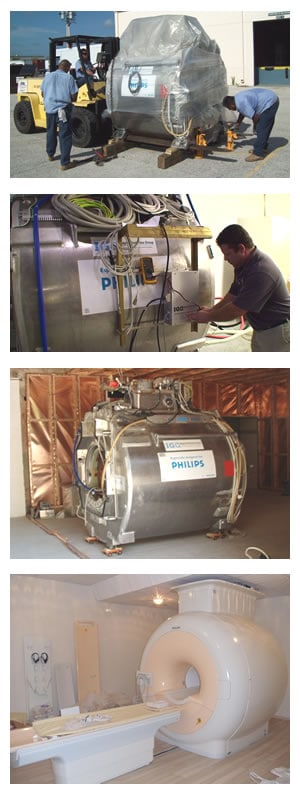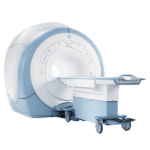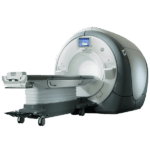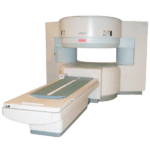Important facts and tips you can memorize or have at hand when you are ready to purchase an used MRI

Of all the information and knowledge you’ve absorbed throughout your years in med school, buying a used MRI was probably not one of them. Fortunately, we’ve composed a breakdown of important facts and tips you can memorize (don’t worry, there is no exam on this) or have at hand when you are ready to purchase an used MRI.
1. When you purchase a used MRI, consider the importance of the magnet, gradient system, and the computer.
- The MRI magnet should produce a consistent magnetic field, cover as wide a field of view as possible, and provide ample patient space.
- The image resolution is higher when the gradient system is faster, which also leads to the field of view being smaller.
- The computer system for an MRI is designed to keep up with the magnet so images are instantly available as the scan progresses.
2. Careful site selection is mandatory for all MRI units. Be sure to cover all the potential safety measures in early design considerations before the purchase of MRI systems, because they raise the cost of construction. Implementation following an installation may be even more costly.
3. Remember that MRI site requirements are specific to each organization. The key issues for site requirements are the examination of the extent of the magnetic field, the area occupied by the magnet, and the weight of the magnet.
4. When selecting your site, consider the fringe field and the need for a site that is free from ambient Radio Frequency (RF) noise.
- A permanent magnet has a minimal fringe field, but needs careful planning due to its massive weight. Remember, the fringe field could cause problems without proper shielding.
- External ambient RF energy signals can degrade MRI image quality, therefore RF shielding is critical. Shielding in a room typically consists of copper or aluminum sheets.
5. To tackle the problems associated with the fringe field, you can use active shielding, close-fitting steel shields integral to the magnet, or passive shielding using steel in the walls around the magnet. Those who install large steel sheets of magnetic shielding should bear in mind that these are costly, and require special construction techniques because of the weight.
6. Since fringe fields are 3-dimensional, areas on the floors above and below the imaging facility may also need controlled access and/or shielding. Actively shielded magnets have significantly reduced fringe fields and generally do not require steel shielding. Generally, the size of the controlled access area for an MRI unit increases as the operational field strength increases for the fringe fields created by superconducting and resistive magnets.
Get Started
Request Pricing Today!
We’re here to help! Simply fill out the form to tell us a bit about your project. We’ll contact you to set up a conversation so we can discuss how we can best meet your needs. Thank you for considering us!
Great support & services
Save time and energy
Peace of mind
Risk reduction
7. Shielding can also be used to contain the magnetic fringe field of resistive and superconducting electromagnet systems. The operation of CRT displays, gamma cameras, electrocardiogram monitors, and image intensifiers are all influenced by the magnetic field; ferromagnetic material in the surrounding area also affects the static magnetic field.
8. The safety boundary in the MR system at which the static magnetic field has diminished sufficiently to pose no physical threat to the general public, is known as the 5 G line. The distance to the 5 G line, which can extend in three dimensions around the magnetic bore, ranges from approximately 9 meters for a 0.5 T magnet to 13 meters for a 1.5 T magnet. With MRI active magnet shielding, the distance to the 5 G line can be reduced drastically.
9. MRI system technicians can compensate to a degree for the effects of large stationary masses on field uniformity by placing corresponding masses of ferromagnetic material in a symmetric position in the magnet area. A careful site selection for your MRI system can eliminate moving ferromagnetic objects such as elevators, automobiles, or forklifts.
10. As MRI technology is especially complex and sensitive, experts should install, adjust, and maintain the equipment, while properly training physicians and technologists as well.
11. Used MRI equipment should also be compatible with DICOM 3.0. Suppliers should provide a detailed explanation on the DICOM conformance statements to ensure proper connectivity with the equipment.
12. Finally, always choose a supplier whose used MRI service and training resources are reliable and well known. Contracts between buyer and supplier should always be guaranteed in writing.
If you would like to share additional tips, or have questions about purchasing an MRI, feel free to contact us.
Posted by:
Bobby Serros
MRI & CT Specialist
407.438.7847



